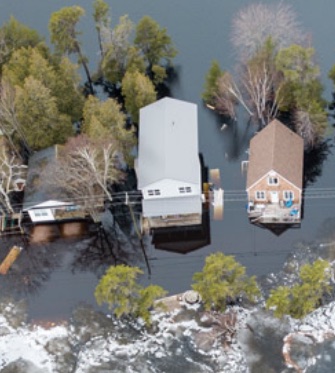A Reserve Bank of Australia Bulletin ( Sept 2021 )
House mortgages, secured by the current value of the houses, account for around two-thirds of Australian major banks’ portfolios.
Economic modelling, using technical insurance costs, are being applied to estimate banks’ exposure to climate risks. The full Reserve Bank pdf report is here. { Authors Kellie Bellrose, David Norman and Michelle Royters }
The widely used “XDI-Climate Valuation” assesses the climate risks from only five physical hazards in Australia: riverine flooding, coastal inundation, forest wildfires, wind storms (other than cyclones), and ground subsidence in drought. It uses a properties’ Value at Risk (VaR) the technical insurance premium, the annual expected cost of climate-related damage relative to the replacement cost of dwellings – costs associated with servicing housing, including insurance, repairs, replacement and maintenance costs. For example, a VaR of 0.4 is equivalent to an annual premium of $2,000 on a building that would cost $500,000 to replace. (x 0.004) Further, an increase of 0.4 VaR is equivalent to a 10% decline in housing price due to climate risk because the increase in premium costs are incurred every year.
Currently 3.5% of dwellings in Australia have a VaR greater than 1.0 (expensive to insure) and this is projected to increase to 8% by 2100.
By 2050 a further 1.5% of properties will become more expensive to insure, and by 2100 a further 5%, creating around 10% of homes worth 10-20% less due to climate risks.
This could happen more rapidly if buyers start to recognise the increasing risk of climate change and start discounting prices more heavily than the modelling suggests. This could be made worse if insurers start to withdraw coverage over climate-sensitive towns and regions
This model only looks at house values. The climate risk for banks is also based on borrower income, and related investor income like rents, which in turn are affected by climate impacts – urban heat islands, water shortages, reductions in local food production, prolonged heat waves, and work & lifestyle responses to these pressures.
However, the take away is that climate impacts will have significant costs on the current housing and development models.
Tom Danby, Moonee Valley Sustainability, 2021

